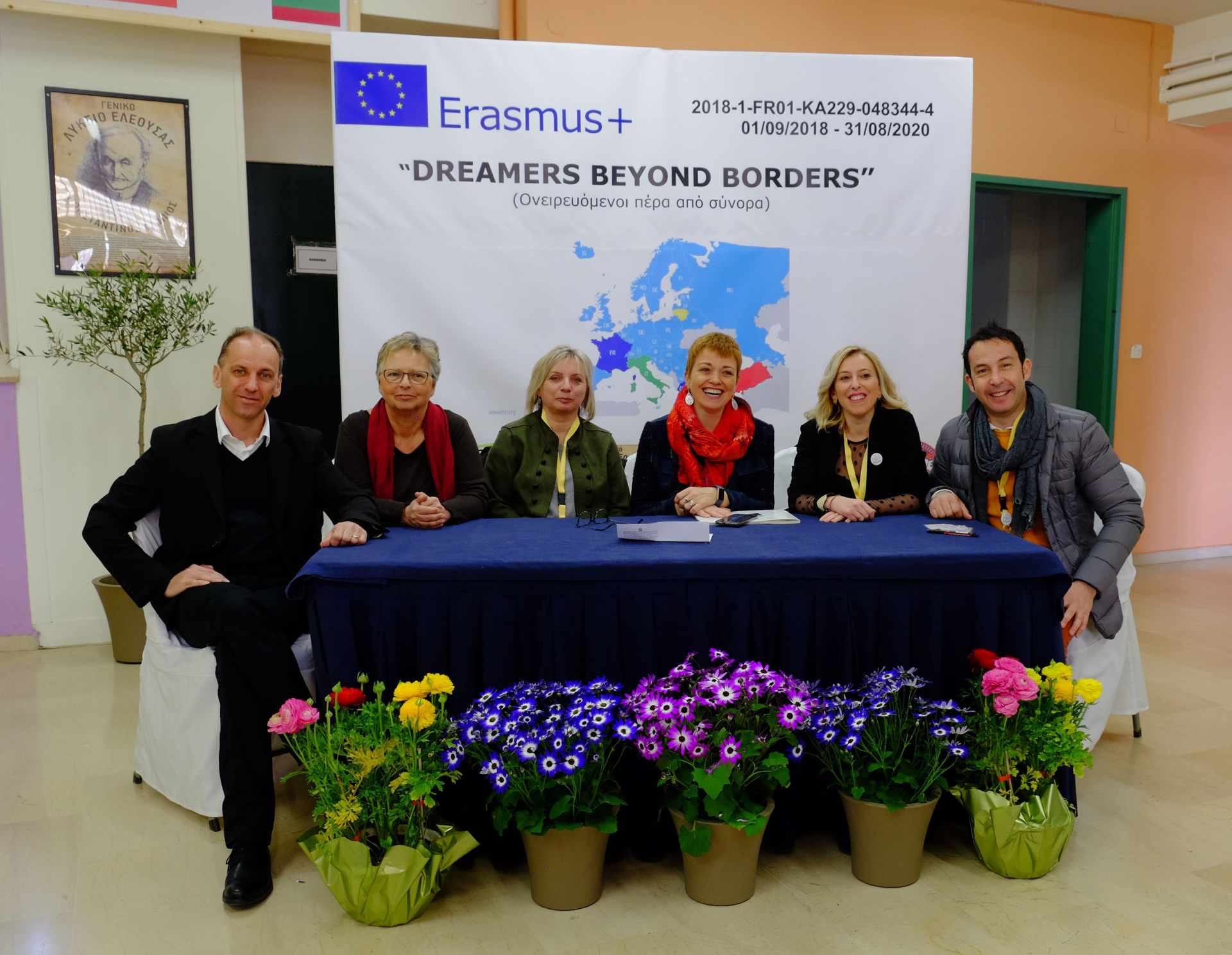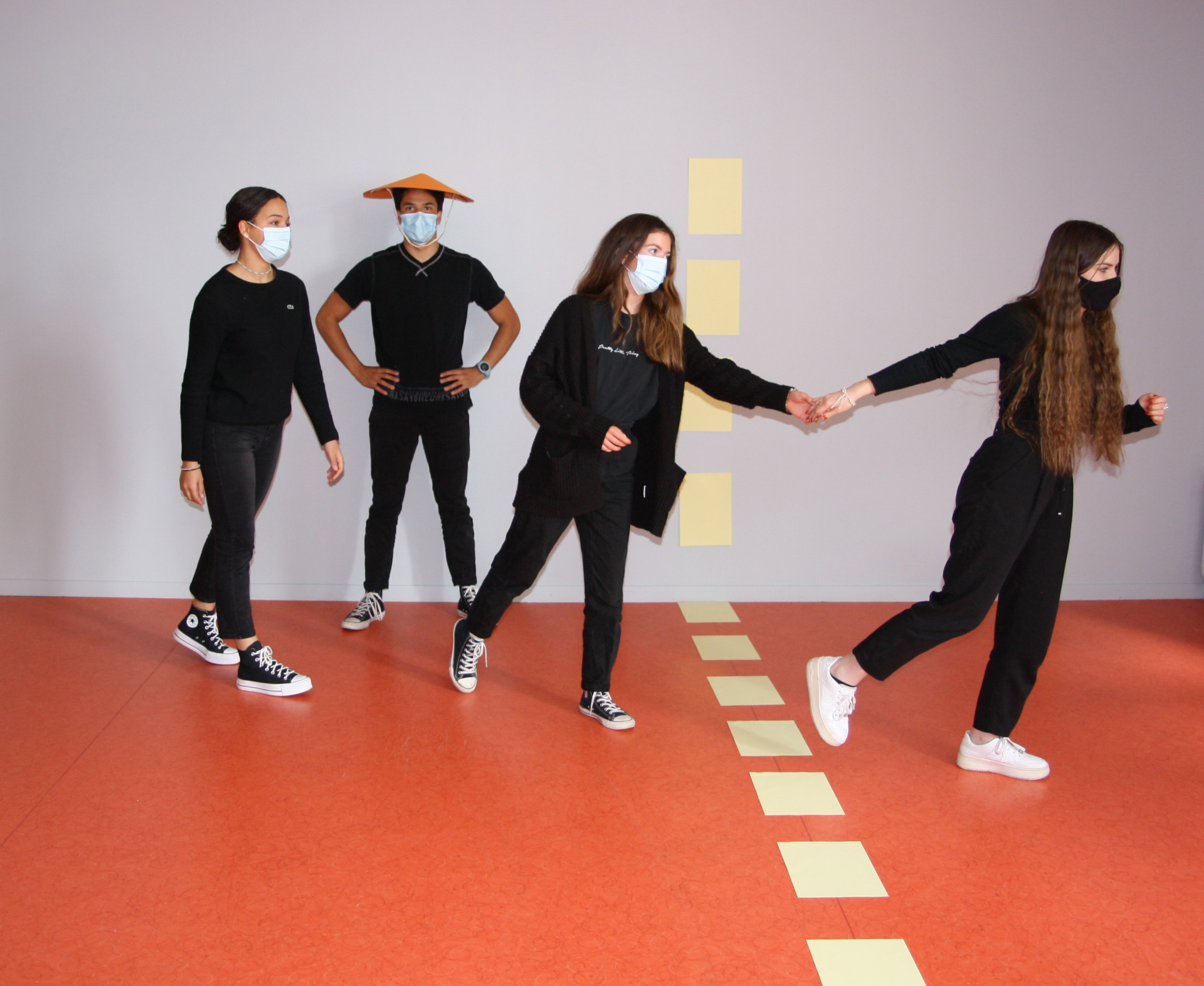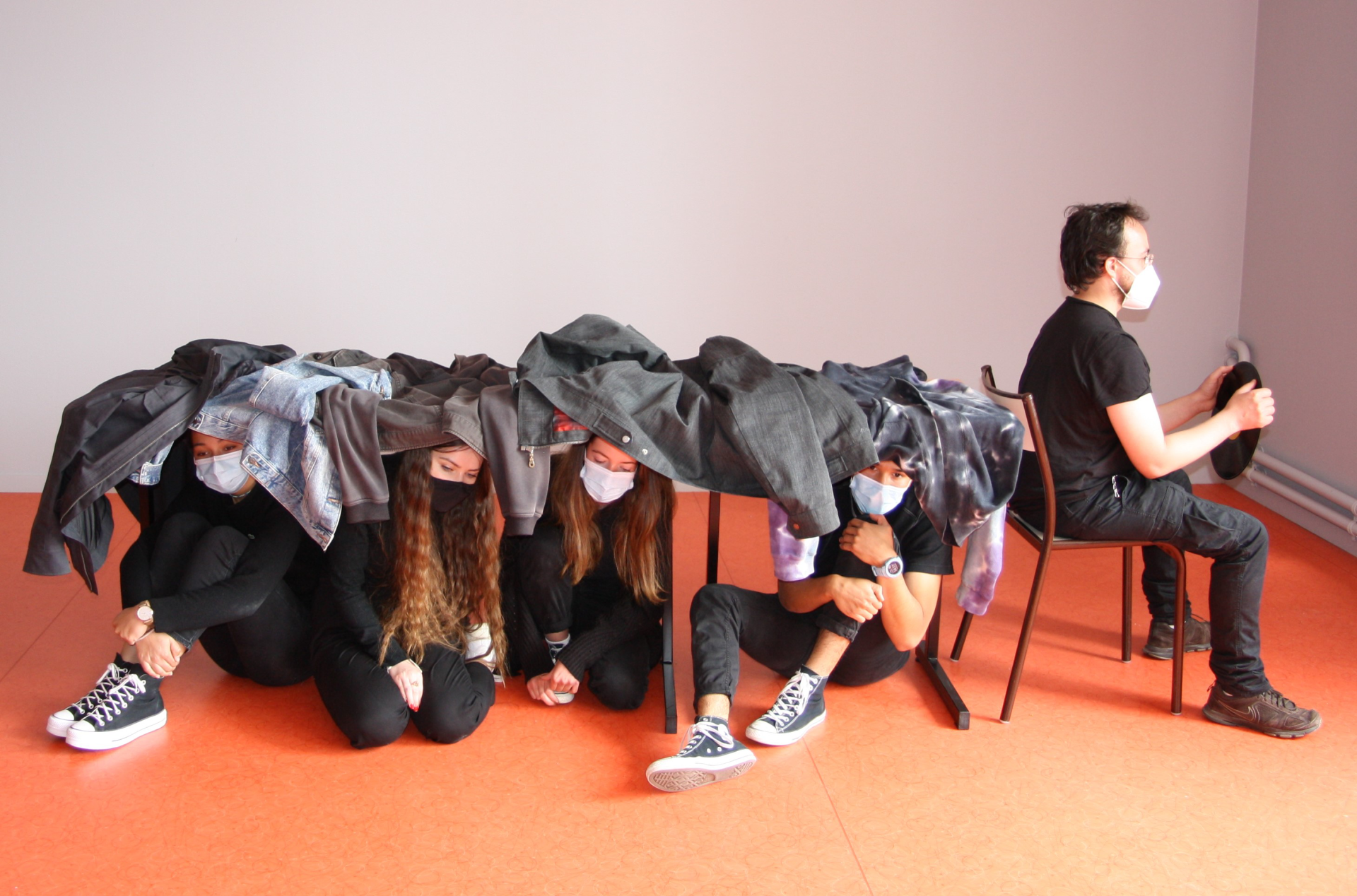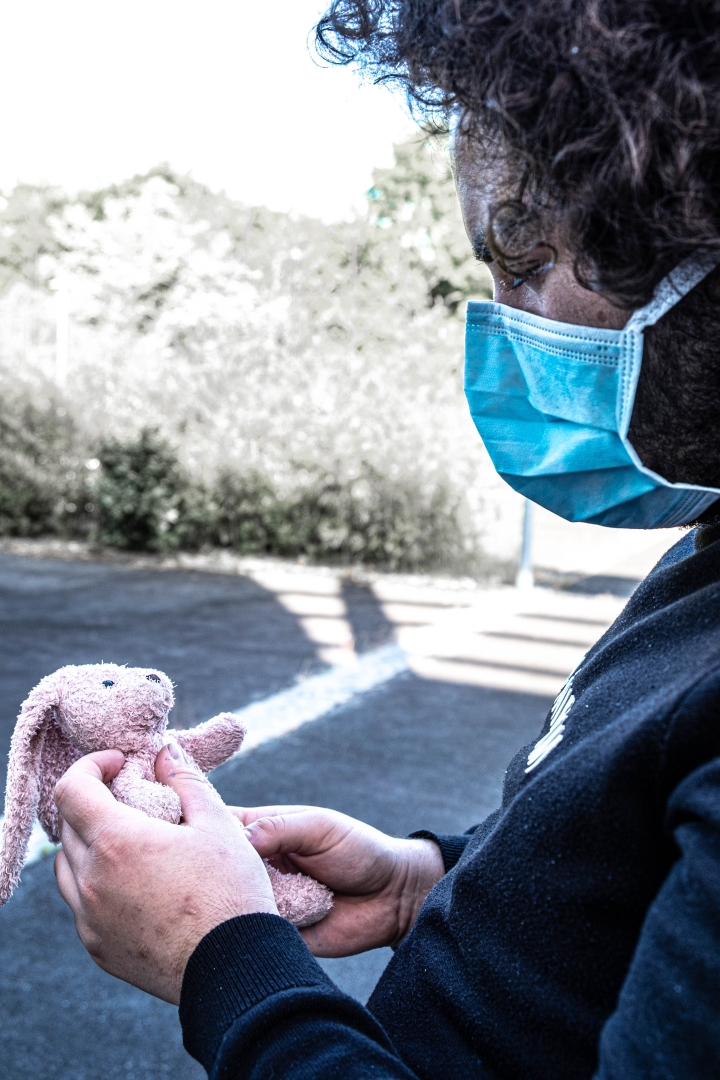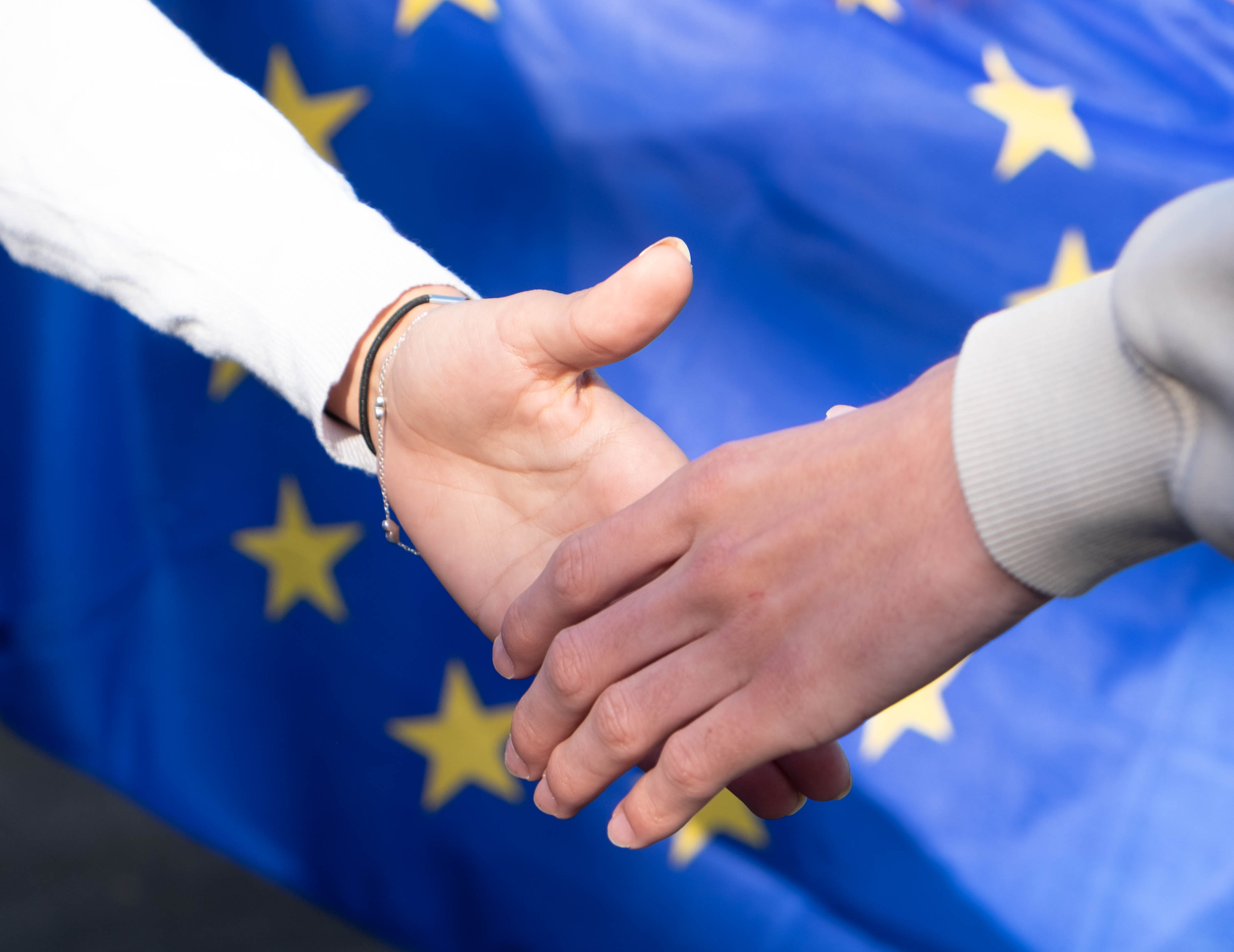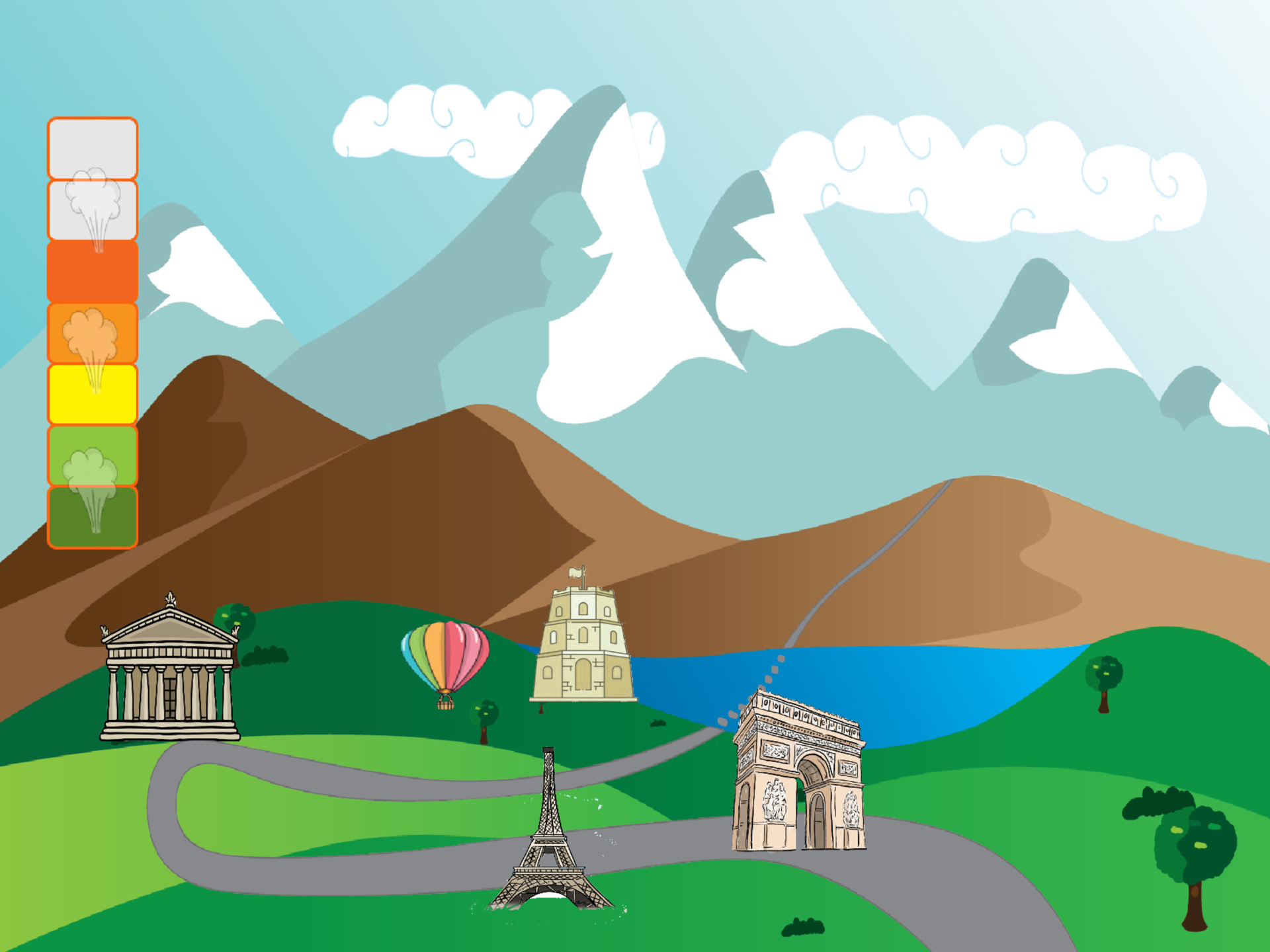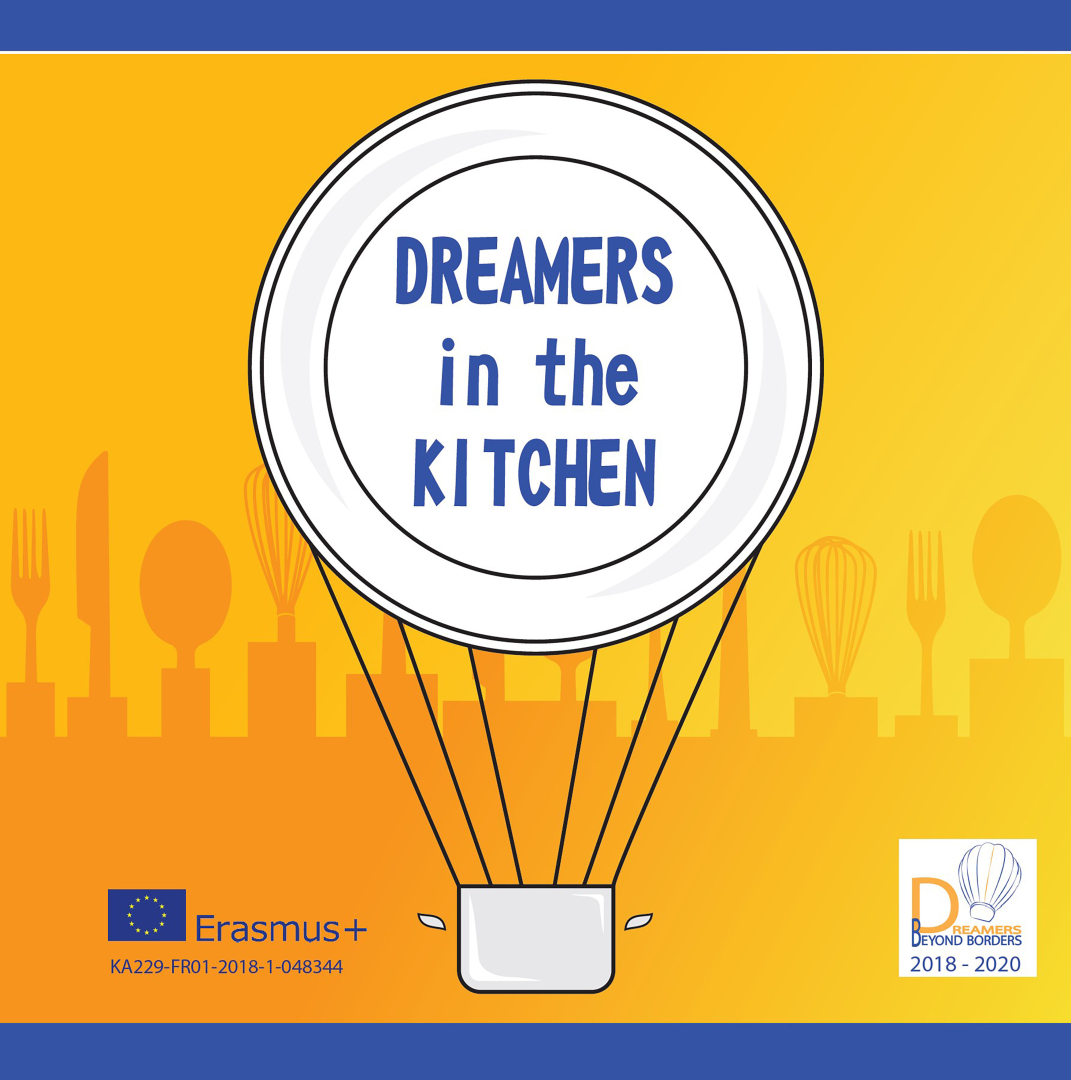Dreamers Beyond Borders
Basic information
Project Title
Dreamers Beyond Borders
Full project title
Dreamers Beyond Borders
Category
Regaining a sense of belonging
Project Description
Given the significant influx of young migrants from various origins, we sought to figure out the best ways to facilitate their integration in our schools. In order to fight against discrimination and prevent these adolescents from dropping out of school, we decided to mobilize our students in the design of a multimedia game. This playful and interactive approach has boosted their motivation through an active pedagogy centered on tolerance and equality.
Geographical Scope
Cross-border/international
Project Region
CROSS-BORDER/INTERNATIONAL: France, Greece, Italy, Lithuania, Turkey
Urban or rural issues
It addresses urban-rural linkages
Physical or other transformations
It refers to other types of transformations (soft investment)
EU Programme or fund
Yes
Which funds
ERASMUS
Description of the project
Summary
Successive migrations are a source of cultural wealth and diversity.
While the arrival of a significant number of young migrants from various origins in our establishment raises questions about the means of encouraging their reception, we have joined forces with four other European high schools encountering similar problems (France, Italy, Greece and Turkey) and a fifth, facing population departures (Lithuania).
Our goals ? Fighting against discrimination and preventing these teenagers from dropping out of school.
We chose to engage our students in this theme through a playful and interactive approach, in order to boost their motivation. Thus, the development of a multimedia game on the subject of migration emerged as a common thread.
We focused on working with students and their families as well as with local stakeholders such as town halls and associations.
Among the highlights, a stay in Greece brought together all the partners; a theater seminar, during which our students illustrated testimonies of migrants through mime; a meeting with young Syrian and Afghan people within a school in a migrant camp; and last but not least exchanges with members of the UNHCR (United Nations Refugee Agency).
Building on these discoveries, we worked together to finalise our multimedia game. This features hot air balloons which symbolise migrants, the challenge was to gain “wind points” by recognising elements of the culture of several countries. Among other productions, a cookbook “Dreamers In The Kitchen” offers intercultural recipes, and the collection “A Migrant Journey”, a series of testimonies on migration.
These achievements have facilitated collaborative work, the inclusion of families and parents of young migrants, as well as learning about living together.
While the arrival of a significant number of young migrants from various origins in our establishment raises questions about the means of encouraging their reception, we have joined forces with four other European high schools encountering similar problems (France, Italy, Greece and Turkey) and a fifth, facing population departures (Lithuania).
Our goals ? Fighting against discrimination and preventing these teenagers from dropping out of school.
We chose to engage our students in this theme through a playful and interactive approach, in order to boost their motivation. Thus, the development of a multimedia game on the subject of migration emerged as a common thread.
We focused on working with students and their families as well as with local stakeholders such as town halls and associations.
Among the highlights, a stay in Greece brought together all the partners; a theater seminar, during which our students illustrated testimonies of migrants through mime; a meeting with young Syrian and Afghan people within a school in a migrant camp; and last but not least exchanges with members of the UNHCR (United Nations Refugee Agency).
Building on these discoveries, we worked together to finalise our multimedia game. This features hot air balloons which symbolise migrants, the challenge was to gain “wind points” by recognising elements of the culture of several countries. Among other productions, a cookbook “Dreamers In The Kitchen” offers intercultural recipes, and the collection “A Migrant Journey”, a series of testimonies on migration.
These achievements have facilitated collaborative work, the inclusion of families and parents of young migrants, as well as learning about living together.
Key objectives for sustainability
We have worked on many goals such as fighting against school dropouts by facilitating intercultural dialogue and thus promoting equal opportunities in order to promote a sustainable and inclusive future. It was a real challenge for our school and our partners using migration as the main subject. We therefore chose to direct our project towards innovative practices combining culture, art, music, theater and multimedia.
Thus our two final productions took the form of a multimedia game and a cookbook using a metaphorical approach to migration. Through theater and photography, we put mimed skits into images in order to produce a book illustrating the journey of a migrant. Professional guitarists (Rosewood duo) made it possible to implement creative workshops.
Our project has permanently changed the outlook of many young people and adults, particularly on unaccompanied minor children. The testimonies collected throughout the project were often traumatic. From a playful project in its aspect (game, cooking recipes), we moved on to a sometimes very involved sociological project (collection of testimonies, visit to a migrant camp in Ioanina)
Thus our two final productions took the form of a multimedia game and a cookbook using a metaphorical approach to migration. Through theater and photography, we put mimed skits into images in order to produce a book illustrating the journey of a migrant. Professional guitarists (Rosewood duo) made it possible to implement creative workshops.
Our project has permanently changed the outlook of many young people and adults, particularly on unaccompanied minor children. The testimonies collected throughout the project were often traumatic. From a playful project in its aspect (game, cooking recipes), we moved on to a sometimes very involved sociological project (collection of testimonies, visit to a migrant camp in Ioanina)
Key objectives for aesthetics and quality
Our project is part of an approach to building European citizenship. It made it possible to develop “living together” skills through the creation of a multimedia game, an intercultural cooking recipe book or even a photo exhibition.
These approaches linking aesthetics, academic and social skills allowed our young people and adults from the different establishments involved in the project to live a unique experience.
The discovery of different arts (photography with a view to creating the cooking recipe book or the “journey of a migrant” book, theater in constructive role-playing games, music with a duo of professionals or even development of multimedia skills) has developed autonomy, sharing, and cooperative work among learners but also in the entire educational community.
Cooperation between the different partner high schools in the project has encouraged true artistic and intellectual emulation. The participants (adults or students) had their lives transformed by this commitment: they gained in autonomy, in reflection, in self-esteem.
Finally, the presence of teacher-trainers in this human adventure made it possible to define this methodology for implementing our activities through the analysis of practice and research work.
The reflective approach of the project was exemplary in this context because it allowed us to create our own educational tools.
These approaches linking aesthetics, academic and social skills allowed our young people and adults from the different establishments involved in the project to live a unique experience.
The discovery of different arts (photography with a view to creating the cooking recipe book or the “journey of a migrant” book, theater in constructive role-playing games, music with a duo of professionals or even development of multimedia skills) has developed autonomy, sharing, and cooperative work among learners but also in the entire educational community.
Cooperation between the different partner high schools in the project has encouraged true artistic and intellectual emulation. The participants (adults or students) had their lives transformed by this commitment: they gained in autonomy, in reflection, in self-esteem.
Finally, the presence of teacher-trainers in this human adventure made it possible to define this methodology for implementing our activities through the analysis of practice and research work.
The reflective approach of the project was exemplary in this context because it allowed us to create our own educational tools.
Key objectives for inclusion
Welcoming migrant students was our main objective. Therefore, we have decided, during real or virtual mobilities offered by the eTwinning platform, to carry out our educational activities using new teaching methods, in particular co-teaching in order to encourage co-creation.
We observed that migrant populations and more particularly students arriving in schools remained too often the “so-called blocked populations” (language barrier, cultural barrier, professional integration). We have chosen an educational methodology of inclusion focused on tolerance, solidarity, welcome and equality.
For this we called on associations that work on welcoming migrants, for French schools, it is “La Cimade” (Inter-movement committee for evacuees), an association which works in favor of young migrants arriving in France, which addressed the themes of prejudices, the journey of a migrant, real-life situations .
It allowed us to know more about differences so to include migrants better and break down the barrier of prejudice. In addition, we have strived in all partner schools to promote the inclusion of the disabled.
The project helped promoting humanistic values and the opening of school to the world.
We observed that migrant populations and more particularly students arriving in schools remained too often the “so-called blocked populations” (language barrier, cultural barrier, professional integration). We have chosen an educational methodology of inclusion focused on tolerance, solidarity, welcome and equality.
For this we called on associations that work on welcoming migrants, for French schools, it is “La Cimade” (Inter-movement committee for evacuees), an association which works in favor of young migrants arriving in France, which addressed the themes of prejudices, the journey of a migrant, real-life situations .
It allowed us to know more about differences so to include migrants better and break down the barrier of prejudice. In addition, we have strived in all partner schools to promote the inclusion of the disabled.
The project helped promoting humanistic values and the opening of school to the world.
Results in relation to category
This project first made it possible to give voice to our students and their families. Consequently, they were able to rediscover a feeling of belonging. Indeed, some of our students were able to reveal themselves more, to highlight pride in their origin even if certain stories were painful (like the testimonies of young people attending school in the Ioanina migrant camp).
For the others, thanks to the methodology used throughout the project, it was about giving them elements of understanding and explanations allowing them to structure their autonomous thinking and develop their sense of creativity.
We therefore prioritized groups of young migrants in partner schools and their families. Schools were in fact the places that needed this informative and creative work the most.
Our project has permanently changed the way many young people and adults view migration. The help of associations like “La Cimade” made it possible to work on the preconceptions and to face the difficulties encountered by these young migrants and their families.
The European award with the EITA prize only gives additional value to the “dreamers beyond borders” project and contributes to bringing the project to life.
For the others, thanks to the methodology used throughout the project, it was about giving them elements of understanding and explanations allowing them to structure their autonomous thinking and develop their sense of creativity.
We therefore prioritized groups of young migrants in partner schools and their families. Schools were in fact the places that needed this informative and creative work the most.
Our project has permanently changed the way many young people and adults view migration. The help of associations like “La Cimade” made it possible to work on the preconceptions and to face the difficulties encountered by these young migrants and their families.
The European award with the EITA prize only gives additional value to the “dreamers beyond borders” project and contributes to bringing the project to life.
How Citizens benefit
The main target groups of the project were students, migrant students, school staff, parents, town halls, associations.
The school leaders facilitated meetings and relationships with families.
The parents of the students were also strongly involved by welcoming a young person into their home. They were also made aware of the theme of welcoming a young foreigner. They participated in meeting evenings in schools.
Through this aspect of the human adventure of the project, young people had the opportunity to reveal themselves more. They were able to highlight their origin, their history and their life journeys. This project has freed up speech for our young people and their families.
These stories have made it possible to lastingly change the outlook of many young adults but also more broadly within families.
During our travels, particularly in Greece, we were able to “visit” migrant camps, particularly the school part, thanks to the relationships between the Greek establishment and the UNHCR.
This visit immersed all of our young people in the heart of our subject without falling into misery. The clear and precise explanations from the Greek teachers were a highlight of the project for all the educational communities in the different partner countries. This was added value to the project.
At the local level of migrant aid associations, theater and music classes were a real added value to the project thanks to the mix of cultures.
Thus, we collaborated with “La Cimade”, an association which works in favor of young migrants arriving in France.
In September 2023, our establishment was revealed to be the French winner of the EITA 2023 Prize (European Innovative Teaching Award) in the “professional teaching” category, true recognition of our civic commitment within the European community.
The school leaders facilitated meetings and relationships with families.
The parents of the students were also strongly involved by welcoming a young person into their home. They were also made aware of the theme of welcoming a young foreigner. They participated in meeting evenings in schools.
Through this aspect of the human adventure of the project, young people had the opportunity to reveal themselves more. They were able to highlight their origin, their history and their life journeys. This project has freed up speech for our young people and their families.
These stories have made it possible to lastingly change the outlook of many young adults but also more broadly within families.
During our travels, particularly in Greece, we were able to “visit” migrant camps, particularly the school part, thanks to the relationships between the Greek establishment and the UNHCR.
This visit immersed all of our young people in the heart of our subject without falling into misery. The clear and precise explanations from the Greek teachers were a highlight of the project for all the educational communities in the different partner countries. This was added value to the project.
At the local level of migrant aid associations, theater and music classes were a real added value to the project thanks to the mix of cultures.
Thus, we collaborated with “La Cimade”, an association which works in favor of young migrants arriving in France.
In September 2023, our establishment was revealed to be the French winner of the EITA 2023 Prize (European Innovative Teaching Award) in the “professional teaching” category, true recognition of our civic commitment within the European community.
Physical or other transformations
It refers to other types of transformations (soft investment)
Innovative character
This project was an opportunity to develop social skills but also specific skills related to learning.
Social skills have an innovative character in this type of project. The title itself set the tone… “dreamers beyond borders”.
We have chosen to promote living together, cooperation between students but also between teachers (notably through collaborative platforms such as e-twinning), development of autonomy and therefore self-esteem.
It was above all a human project. This synergy has made it possible to develop specific skills, particularly in digital technology with the learning of infographic techniques while promoting freedom of involvement in the creative process.
In addition, the photographic and artistic exhibitions have enabled new appropriations of school spaces by students but also by their parents (multiple meetings, opening of the school to the world).
We focused our project on innovative practices that enhance students’ motivation thanks to a playful and interactive approach using multimedia.
Our project helped promote humanistic values and school openness to the world.
We also engaged with academic training institutions.
Social skills have an innovative character in this type of project. The title itself set the tone… “dreamers beyond borders”.
We have chosen to promote living together, cooperation between students but also between teachers (notably through collaborative platforms such as e-twinning), development of autonomy and therefore self-esteem.
It was above all a human project. This synergy has made it possible to develop specific skills, particularly in digital technology with the learning of infographic techniques while promoting freedom of involvement in the creative process.
In addition, the photographic and artistic exhibitions have enabled new appropriations of school spaces by students but also by their parents (multiple meetings, opening of the school to the world).
We focused our project on innovative practices that enhance students’ motivation thanks to a playful and interactive approach using multimedia.
Our project helped promote humanistic values and school openness to the world.
We also engaged with academic training institutions.
Disciplines/knowledge reflected
All artistic and linguistic disciplines worked together to achieve the final project. As we focused on the theme of migration and the knowledge that went with it, we needed to work on specific skills. The joint choice with the other partners of a multimedia game imposed a strict working methodology. The heaviness of the task to be accomplished required cooperative work (programming, choice of photos, music, graphics specifications).
So we divided the work at the national level of the different partner countries: The programming of the game was carried out by Greece and France and the graphic aspect by the Italian team.
The music was produced by France. A musical approach was organized with the help of creative workshops offered by a duo of professional guitarists (Le Duo Palissandre). This occurred as part of our project at the “Basilica cistern” of Istanbul in Turkey, during an event open to the public and organized in collaboration with the Town Hall.
Through theater and photography (led by Greece, France and Turkey), we put mimed skits into images in order to produce a book illustrating the “journey of a migrant”, accompanied by testimonies. Cooperation between the different actors using eTwinning and social networks facilitated the realisation of these productions.
The ideas and design of the game enabled true cooperation between partners. Working this way, we were able to develop a photo book on migration. We saved “time” thanks to this cooperative work and consequently we were able to work on other aesthetic elements.
Of course, each partner had a coordinator which facilitated moments of collaborative work. In fact, the coordinators from each country could have videoconferences via e-twinning for regular updates on the progress of the project.
So we divided the work at the national level of the different partner countries: The programming of the game was carried out by Greece and France and the graphic aspect by the Italian team.
The music was produced by France. A musical approach was organized with the help of creative workshops offered by a duo of professional guitarists (Le Duo Palissandre). This occurred as part of our project at the “Basilica cistern” of Istanbul in Turkey, during an event open to the public and organized in collaboration with the Town Hall.
Through theater and photography (led by Greece, France and Turkey), we put mimed skits into images in order to produce a book illustrating the “journey of a migrant”, accompanied by testimonies. Cooperation between the different actors using eTwinning and social networks facilitated the realisation of these productions.
The ideas and design of the game enabled true cooperation between partners. Working this way, we were able to develop a photo book on migration. We saved “time” thanks to this cooperative work and consequently we were able to work on other aesthetic elements.
Of course, each partner had a coordinator which facilitated moments of collaborative work. In fact, the coordinators from each country could have videoconferences via e-twinning for regular updates on the progress of the project.
Methodology used
Initially we chose a playful approach to the project. It seemed interesting to us to approach this rather serious and intense theme of migration by going beyond the emotional aspect and using constructive distancing.
The role of teacher trainers on this project was essential in the methodology used. The analysis of practices and research work in this area enabled the creation of educational tools specific to the project. All educational practices must be subject to a reflective approach.
Innovation lies both in the techniques used but also in the constant improvement of the intellectual and artistic approach to the object of study. For our students it was about understanding the motivations and hopes of migrants.
The know-how of everyone (students, teachers) led to a spirit of cooperation and facilitated exchanges and meetings.
The role of teacher trainers on this project was essential in the methodology used. The analysis of practices and research work in this area enabled the creation of educational tools specific to the project. All educational practices must be subject to a reflective approach.
Innovation lies both in the techniques used but also in the constant improvement of the intellectual and artistic approach to the object of study. For our students it was about understanding the motivations and hopes of migrants.
The know-how of everyone (students, teachers) led to a spirit of cooperation and facilitated exchanges and meetings.
How stakeholders are engaged
Of course, it is at the European level that our project took shape. Indeed, the application of our partnership and its theme “Dreamers beyond borders” caught the attention of the European Commission and enabled its validation in 2018. The financial involvement was commensurate with our requests but also the implementation provision of a collaborative platform such as e-twinning has enabled intense collaborative work between the different partners. The implementation of the project was therefore facilitated.
At the national level, France was the project leader and we chose our partners based on the theme, namely migration.
The specifications were strict and were established in cooperation. Each of the target audiences was assigned specific tasks to work on. At the start of the project, we established the different mobilities and exchanges between partners.
The French high school in cooperation with the Greek high school had to work on creating the multimedia game. The Italian high school had to create the layout of the cooking recipe book, knowing that each school had to provide 3 recipes that combined several countries. The Turkish high school was responsible for disseminating the project via social networks and on the eTwinning platform. The Lithuanian high school reported on each mobility through a “newsletter”. The French school of La Rochelle was responsible for the cultural part of the project with the involvement of theater troupes and professional musicians.
This distribution of tasks promoted cooperation and facilitated the coordination work of the French high school in Pau.
Finally locally, high schools and town halls facilitated meetings and supported coordinators to implement the entire methodology of our project.
Finally, being rewarded with the EITA 2023 prize is an added value to our project which makes it unique within the European community.
At the national level, France was the project leader and we chose our partners based on the theme, namely migration.
The specifications were strict and were established in cooperation. Each of the target audiences was assigned specific tasks to work on. At the start of the project, we established the different mobilities and exchanges between partners.
The French high school in cooperation with the Greek high school had to work on creating the multimedia game. The Italian high school had to create the layout of the cooking recipe book, knowing that each school had to provide 3 recipes that combined several countries. The Turkish high school was responsible for disseminating the project via social networks and on the eTwinning platform. The Lithuanian high school reported on each mobility through a “newsletter”. The French school of La Rochelle was responsible for the cultural part of the project with the involvement of theater troupes and professional musicians.
This distribution of tasks promoted cooperation and facilitated the coordination work of the French high school in Pau.
Finally locally, high schools and town halls facilitated meetings and supported coordinators to implement the entire methodology of our project.
Finally, being rewarded with the EITA 2023 prize is an added value to our project which makes it unique within the European community.
Global challenges
We observe on a global scale that population migrations are increasingly significant and are cyclical. They have various origins that can be whether political, conflictual or even climatic.
For all these reasons, we welcome migrant populations into our schools. Hence we are immediately asked how to include them in our school system in a caring and positive way.
As a result, we have developed our own methodologies so that local skills are efficient. Each partner country has a significant challenge facing the influx of migrant populations (France, Italy, Greece, Turkey). Our Lithuanian partner is facing the departure of its young population, even if it is now also facing with welcoming Ukrainian populations.
Getting to know the others, living together, and the values of school in general made it possible to disseminate the project locally.
For all these reasons, we welcome migrant populations into our schools. Hence we are immediately asked how to include them in our school system in a caring and positive way.
As a result, we have developed our own methodologies so that local skills are efficient. Each partner country has a significant challenge facing the influx of migrant populations (France, Italy, Greece, Turkey). Our Lithuanian partner is facing the departure of its young population, even if it is now also facing with welcoming Ukrainian populations.
Getting to know the others, living together, and the values of school in general made it possible to disseminate the project locally.
Learning transferred to other parties
We believe that the method can be transferable to other groups. In the case of the “Dreamers beyond borders” project, we relied on cooperative working methods to encourage emulation among the group’s various partners.
Working on a multimedia game, a cooking recipe book and a photo exhibition require different skills: programming, writing, visualisation, occupation of space. They required a lot of coordination and efficiency to obtain a quality result, particularly the multi-media game as well as the work on the different arts, theater, music, photo drawing.
To do this, we offered our students elements of understanding allowing them to structure their independent and creative thinking.
Thus we believe that by developing specific skills linked to the arts and languages along with transversal skills (autonomy, taking initiative, commitment, cooperation) the methodology of our project is transferable to other beneficiaries.
Working on a multimedia game, a cooking recipe book and a photo exhibition require different skills: programming, writing, visualisation, occupation of space. They required a lot of coordination and efficiency to obtain a quality result, particularly the multi-media game as well as the work on the different arts, theater, music, photo drawing.
To do this, we offered our students elements of understanding allowing them to structure their independent and creative thinking.
Thus we believe that by developing specific skills linked to the arts and languages along with transversal skills (autonomy, taking initiative, commitment, cooperation) the methodology of our project is transferable to other beneficiaries.
Keywords
Cooperation
Inclusion
Sharing
Self-esteem
Living together

